Krannert Art Museum held its opening of the annual Master of Fine Arts Exhibition on Saturday, April 9th. This year’s MFA Exhibition provides visitors the chance to step beyond passive viewing by partaking in the many interactive pieces displayed throughout the Main Level Galleries. The exhibition features the 2016 Masters of Fine Arts graduates of the School of Art + Design at UIUC. The official statement on the KAM website describes the presented work as “[m]arking a meaningful step further into the art world, the exhibition highlights and celebrates the artists’ exceptional creativity, curiosity, and inventiveness.”
Visitors crowded the gallery starting at 5 p.m., going from piece to piece in a frenzy of interest. It is easy to say it was hard to keep one’s eyes on just one project at a time. One of the first projects guests were immediately drawn to upon entering consisted of a wall hosting an iPad flanked by silverware, a Mac Desktop, and a TV monitor, all displaying the work of Industrial Design student Zoe Lu. Each screen displayed information about her digital app Foodventure. Visitors watched a commercial playing on the monitor and swiped through the app on the iPad as Lu explained answered questions and chatted with viewers.
Lu’s artist statement in the 2016 MFA catalogue explains how modern technology can be used to erode a time-suck that has been plaguing the world for generations: “A waiting line is an important site for information sharing between informed and uninformed consumers. My work aims to create a method for social engagement that nudges customers to find other adventurous food serendippers with which to share a table and possibly reduce waiting time and improve those customers’ perceptions of their waiting experience.”
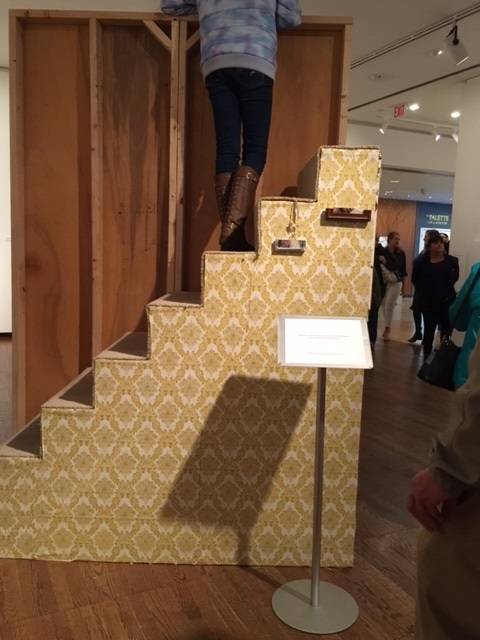
Jess Kiel-Wornson’s pieces had lines of their owns to deal with. Scattered throughout the room were interactive multimedia installations of what appear upon first glance as standard household items. Kiel-Wornson’s series The Archive of a Disagreeable Woman hints at domestic turbulence with literal fragments of a broken-home: one side of a sawed-in-half bed, a kitchen table littered with empty glasses and cigarette butts from a post-poker-night carnage, and a curtained bathtub with an attached staircase designated for voyeurism. Visitors became aware of a heartbeat as they made their way in the bathtub’s direction, a pulsing sound emanating from behind the curtain that piqued curiosity as well as nerves. A sign alerts guests: “Please, climb the stairs. Be careful, you can look.” This vague warning was heeded by many, and there was a never-ending line of people waiting on the stairs to get a glimpse below. Those who looked were greeted with a hazy technicolor projection on the tub’s surface of what appeared to be various clips of old-fashioned housewives doing their domestic duties.
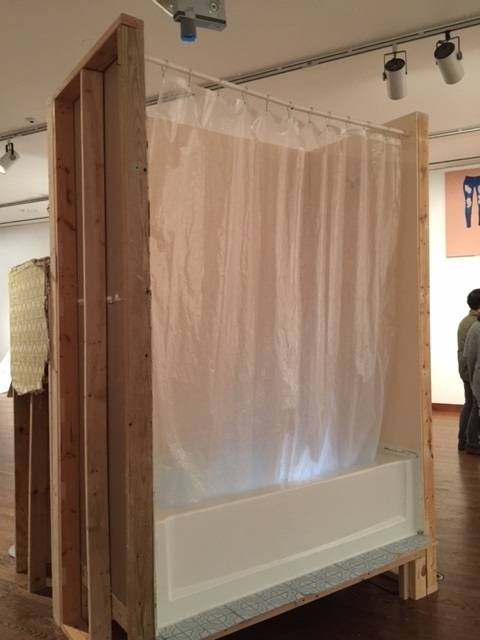
This same projection sticks to the underside of the table of The Kitchen, where another sign tells viewers: “Lie on your back, under the table, that’s where you want to be.” Kiel-Wornson’s statement in the catalogue says she uses her performative sculpture and istallation “ to put people together in a space to face ourselves and each other, to grapple with the multiple points of connection and departure that make up the ever-shifting identity of a social world,” that the stories told in The Archive of a Disagreeable Woman “are the soft, and seemingly innocuous, transgressions and traumas of the everyday.”
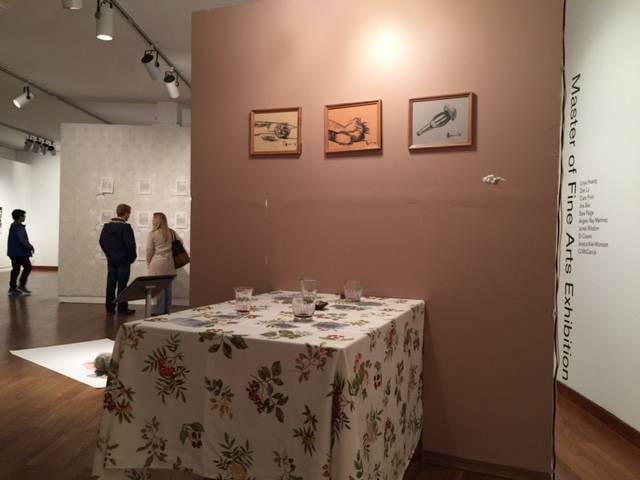
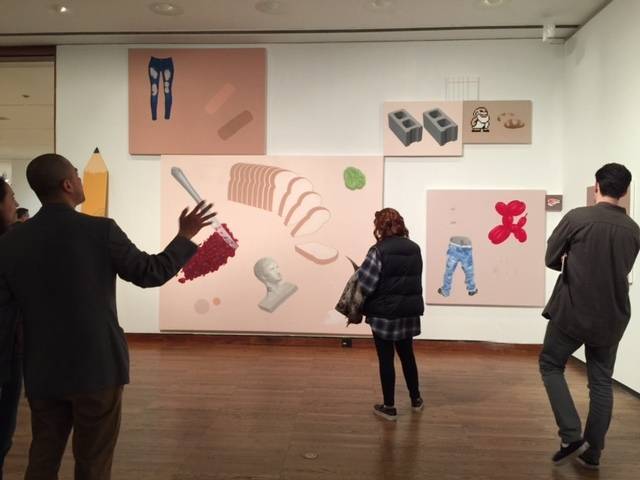
Angelo Ray Martínez’s acrylic work displays seemingly unrelated images on the same canvases, from pixelated figures next to a roll of bread on one canvas, to ripped jeggings and bandaids on another. Martínez says in his artist statement: “This work questions these subtle messages by contrasting a variety of image making practices, revealing through comparison how similar subjects, depicted differently, can conjure varied meanings.” Other work displayed included James Wisdom’s oil on canvas paintings, which he describes as being “a surreal reflection of my cultural and sociological experiences.” These reactions to culture are also felt in CJ McCarrick’s artwork, a combination of sculpture and digital print, with the mission of “examining the the complicated relationships between religious practices and cultural politics through an active investigation of both traditional spiritual practices and the manipulative tendencies of religious institutions.”
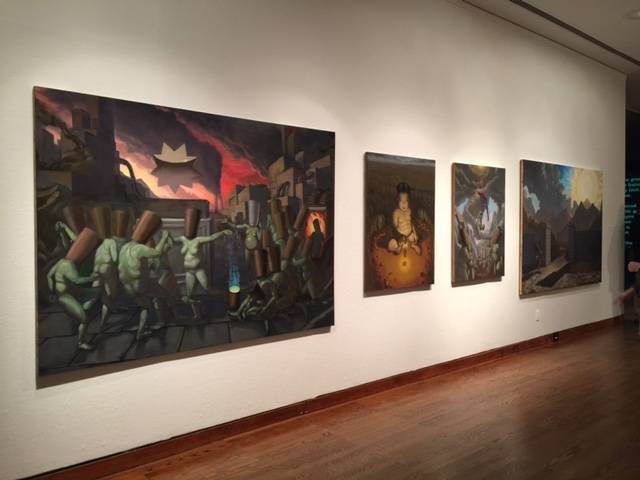
One other installation piece hung in a darkened room: strands of flashing lights that trickled down from the ceiling, creating a pathway that urged visitors to walk through. Artist Sara Paige explains in her artist statement, “I build immersive environments to examine the interplay of light and dark.” No better quote summarizes the opening night of the MFA Exhibition, an interactive and immersive environment with an almost playful atmosphere upon first glance. Visitors to the exhibition were indeed drawn into the settings that the artists had created, allowing for both an exploration of the artists’ journeys in creating these works and of the hidden and often unacknowledged problems that each of attempts to conquer by creeping up the staircase of their budding careers.
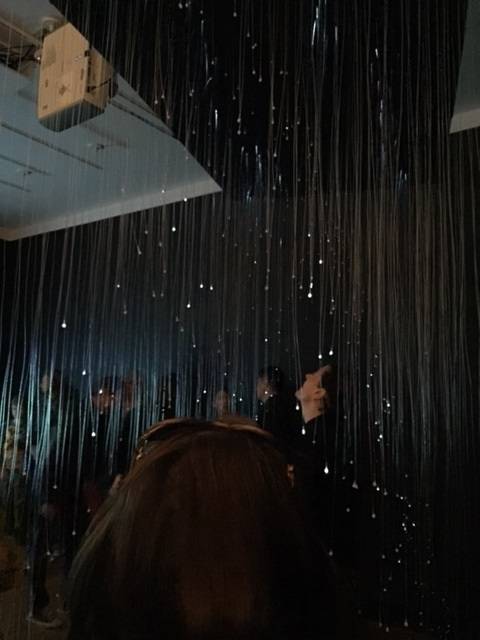
A full list of the artists displayed at the 2016 MFA Exhibition can be found on the Krannert Art Museum website. The exhibition is free and open to the public and runs until April 23rd.
About Shelly Chang…
Shelly Chang is a Smile Politely writer for the Arts and Culture sections who drinks too much coffee and needs some book recommendations. Tweet her some @shellychangsp.








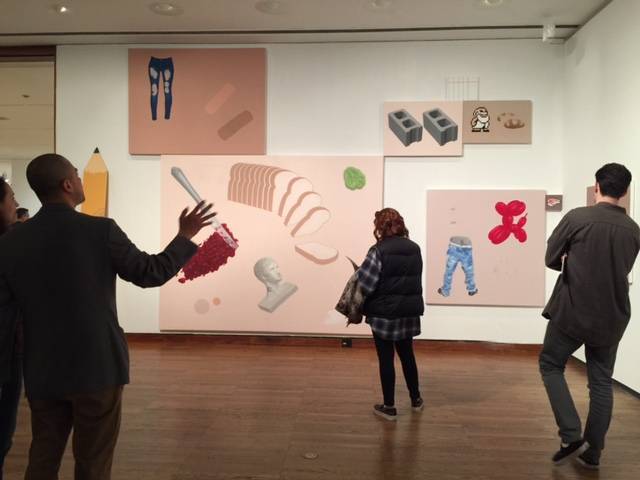
 About Shelly Chang…
About Shelly Chang…